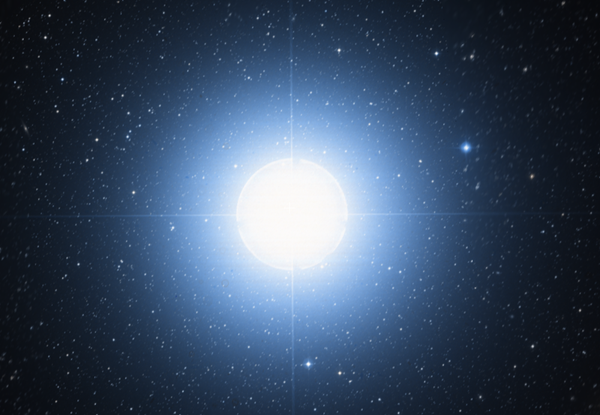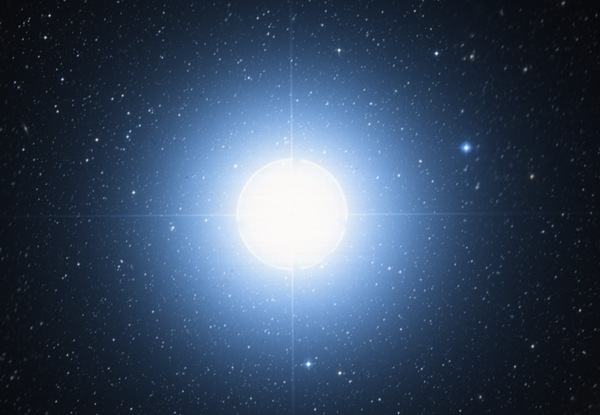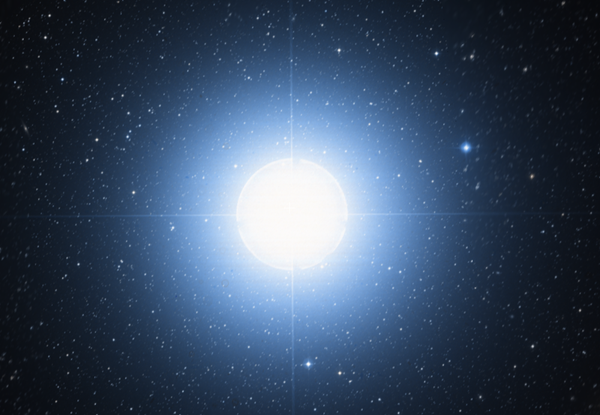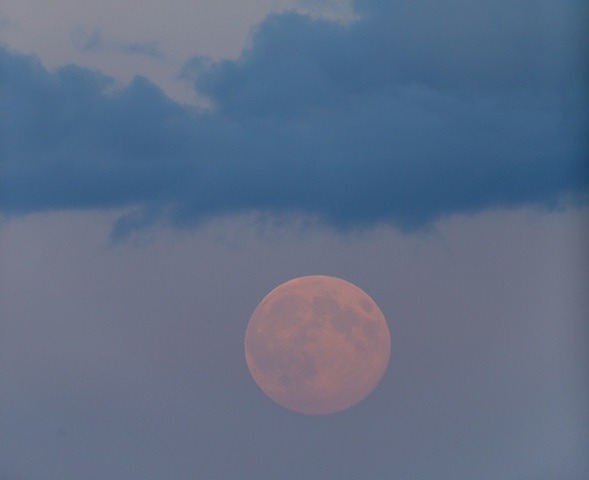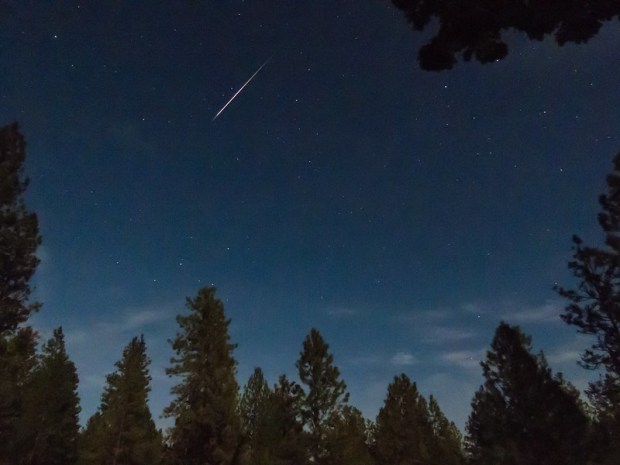Friday, May 13
• First Quarter Moon occurs at 1:02 p.m. EDT. The half-lit orb rises shortly after noon local daylight time, appears highest in the south shortly before sunset, and sets around 2 a.m. The Moon spends this evening among the background stars of southwestern Leo the Lion, less than 5° from that constellation’s brightest star, Regulus.
Saturday, May 14
• The Moon moves approximately 13° eastward relative to the starry background every 24 hours, and its motion carries it near Jupiter this evening. From North America, the two appear within 5° of each other all night. They will be in conjunction at 6 a.m. EDT tomorrow morning, when our satellite passes 2° due south of the planet. Although the best views of the pair come with the naked eye or binoculars, don’t pass up the opportunity to observe Jupiter through a telescope. The giant planet’s disk currently spans 39″ and displays a wealth of atmospheric detail. All this week, Jupiter appears high in the south as darkness falls and doesn’t set until nearly 3 a.m. local daylight time. It shines at magnitude –2.2 — brighter than any other point of light in the night sky — against the backdrop of southern Leo.
Sunday, May 15
• Although the calendar says May, the sky’s Summer Triangle returns to late-evening prominence this month. The asterism’s three bright stars — Vega in Lyra, Deneb in Cygnus, and Altair in Aquila — all clear the horizon by 11 p.m. local daylight time. An hour later, they rule the eastern sky. Vega shines brightest and appears at the apex of the triangular asterism. Look for Deneb to Vega’s lower left and Altair to the lower right of the other two. The Summer Triangle will grace the Northern Hemisphere’s evening sky from now through the end of the year.
Monday, May 16
• Another comet in the growing throng of such objects discovered by the Pan-STARRS telescope in Hawaii makes its appearance in May’s morning sky. Comet PANSTARRS (C/2013 X1) currently glows around 7th magnitude in northeastern Aquarius. (This morning, it lies less than 1° due north of 5th-magnitude Chi [c] Aquarii.) From most of the United States, you’ll need a clear, flat eastern horizon to spot the comet through a telescope just before dawn breaks.
Tuesday, May 17
• Grab your binoculars tonight and target the bright star Regulus in Jupiter’s current home constellation, Leo the Lion. Many people know that this object represents the Lion’s heart, but few realize it also is a binocular double. Regulus B, which glows at 8th-magnitude, shows up as a pinpoint nearly 3′ from the 1st-magnitude primary. See “10 tempting spring binocular targets” in the May issue of Astronomy for other treats visible with just the slightest optical aid.
Wednesday, May 18
• Neptune rises shortly before 3 a.m. local daylight time this week and appears low in the southeast before dawn. The distant world glows at magnitude 7.9, so you’ll need binoculars or a telescope to spot it. Fortunately, it lies near a brighter star that will help guide you. Look for the planet 0.4° south-southeast of 4th-magnitude Lambda (l) Aquarii. You can confirm a sighting of Neptune through a telescope, which reveals the planet’s 2.3″-diameter disk and blue-gray color.
• The Moon reaches apogee, the farthest point in its orbit around Earth, at 6:06 p.m. EDT. It then lies 252,235 miles (405,933 kilometers) from Earth’s center.
Thursday, May 19
• Brilliant Mars passes 1.0° due north of the 2nd-magnitude double star Delta (d) Scorpii this evening. Binoculars or a telescope at low power will afford the best views of this conjunction.
Friday, May 20
• Although Saturn will reach opposition and peak visibility two weeks from today, observers will be hard-pressed to see it as inferior this week. The ringed planet rises shortly after 9 p.m. local daylight time and appears highest in the south around 2 a.m. Saturn shines at magnitude 0.1 and stands out against the relatively dim background stars of southern Ophiuchus. If you target the beautiful world through a telescope, you’ll see its 18″-diameter disk surrounded by a ring system that spans 42″ and tilts 26° to our line of sight.
Saturday, May 21
• The Moon looks completely illuminated all night as it reaches Full phase at 5:14 p.m. EDT. You can find our satellite rising in the east around sunset and peaking in the south at 1 a.m. local daylight time. The Moon passed 6° due north of Mars during the afternoon hours, and those two form a dramatic quadrilateral with Saturn and the 1st-magnitude star Antares throughout the night.
Sunday, May 22
• Mars lies opposite the Sun in our sky today as it reaches peak visibility for 2016. The Red Planet appears low in the southeast as darkness falls and grows more prominent as the evening wears on and it climbs higher. By 1 a.m. local daylight time, it stands one-third of the way to the zenith in the southern sky against the backdrop of stars in northern Scorpius. The world shines at magnitude –2.1, brighter than it has been since 2005. When viewed through a telescope, the planet’s ocher-colored disk spans 18.4″ and shows subtle dark markings along with a whitish north polar cap. The Red Planet actually will come closest to Earth eight days from now, when its disk will swell to 18.6″ across. For more details on viewing the planet, see “Observe Mars at its best” in the May Astronomy.
• The Moon’s eastward motion relative to the background stars carries it 3° north of Saturn in this evening’s sky.


